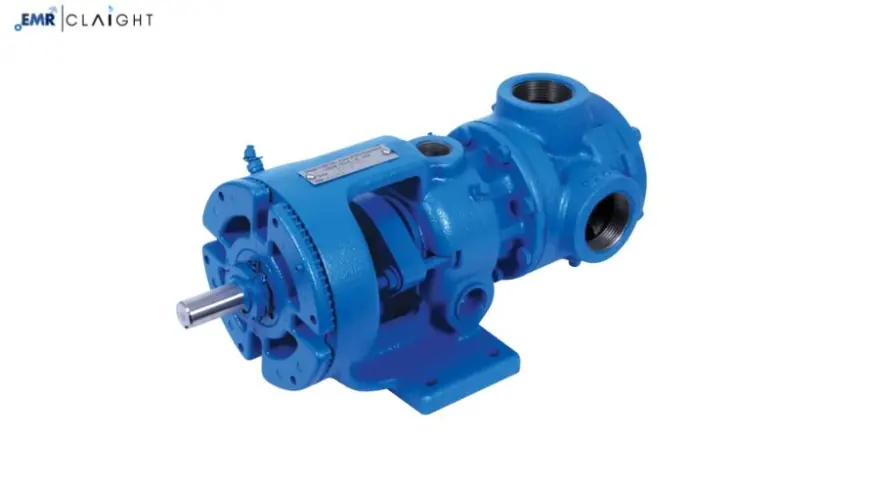Pumps Market Growth: Challenges, Drivers, and Emerging Technologies
Explore the global pumps market for innovative solutions in fluid transportation, water treatment, oil & gas, and industrial applications

The pumps market is an integral component of global infrastructure, playing a pivotal role across multiple industries, from water treatment and oil and gas to agriculture, construction, and manufacturing. As populations grow, industrialization expands, and the demand for essential services like water, energy, and sanitation increases, the demand for pumps has also surged. Pumps are mechanical devices used to transport liquids, gases, and sometimes slurries from one location to another, and they come in various forms such as centrifugal pumps, positive displacement pumps, peristaltic pumps, and diaphragm pumps, each serving distinct functions in different applications.
In this essay, we will explore the current state of the pumps market, its key drivers, challenges, technological advancements, and the future outlook for this essential industry. The pumps market, a highly dynamic and competitive sector, is undergoing significant changes driven by innovations in technology, environmental concerns, and shifting global industrial trends. We will also examine the regional and industry-specific demand for pumps, with a particular focus on key market segments and trends that are influencing the growth of this sector.
Overview of the Pumps Market
The pumps market refers to the manufacturing, distribution, and sale of various types of pumps used in a wide range of industries. Pumps are essential in fluid and gas transfer and are critical to ensuring the continuous operation of many industrial processes. From the water supply and wastewater treatment industries to power plants and chemical processing, pumps are indispensable.
Types of Pumps
Pumps can generally be categorized into two main types:
-
Centrifugal Pumps: These pumps use rotational energy to increase the pressure and flow of a fluid. They are widely used in industries such as water supply, sewage treatment, and chemical processing.
-
Positive Displacement Pumps: These pumps displace a fixed amount of fluid with each cycle and are used in applications where precise flow control is necessary. Examples include diaphragm, piston, and gear pumps.
Each type of pump has specific applications depending on factors such as flow rate, pressure, fluid viscosity, and the chemical properties of the fluid being pumped.
Get a Free Sample Copy of Report
Market Segmentation
The global pumps market is diverse and can be segmented based on type, application, end-user industry, and region.
-
By Type: Centrifugal, Positive Displacement (Diaphragm, Gear, Peristaltic, and Piston Pumps).
-
By Application: Water and wastewater treatment, oil and gas, chemicals, agriculture, food and beverage, pharmaceuticals, and more.
-
By End-User Industry: Municipal, industrial, residential, and commercial sectors.
-
By Region: North America, Europe, Asia-Pacific, Latin America, and the Middle East & Africa.
This segmentation allows manufacturers to target specific markets and offer tailored solutions to meet the demands of various sectors.
Market Drivers
Several key factors are fueling the growth of the pumps market. These drivers reflect both macroeconomic trends and industry-specific needs.
Industrialization and Urbanization
As countries around the world continue to industrialize, the demand for pumps in sectors such as manufacturing, mining, and water treatment has increased. Urbanization further amplifies this demand, particularly in large cities where infrastructure development, including water supply, drainage systems, and energy production, requires advanced pumping systems.
Growing Demand for Water and Wastewater Treatment
Water scarcity and the need for efficient wastewater treatment are significant drivers for the pumps market. In developing and developed nations alike, governments and private sector players are investing heavily in infrastructure projects aimed at improving water availability and quality. This has led to increased demand for pumps used in desalination, water treatment, and sewage systems.
Oil & Gas Exploration and Production
The oil and gas industry is one of the primary consumers of pumps, particularly centrifugal and positive displacement pumps used in drilling, refining, and production processes. With the global energy demand increasing, new exploration projects, especially in offshore and deepwater regions, continue to drive pump sales.
Technological Advancements
Innovations in pump design, materials, and energy efficiency have also contributed to the growth of the pumps market. Smart pumps, for instance, are increasingly being used in industrial applications where predictive maintenance and real-time performance monitoring can optimize the system’s operation and minimize downtime. The integration of Internet of Things (IoT) technology and automation systems in pumps has expanded their capabilities and applications.
Challenges in the Pumps Market
While the pumps market is growing rapidly, it is not without challenges. Some of the key obstacles that the industry faces include:
High Energy Consumption
Pumps, especially those used in large-scale industrial applications, consume significant amounts of energy. The energy inefficiency of older systems and the demand for power-hungry pumps in industrial processes can lead to high operational costs and environmental concerns. The industry is under pressure to innovate and develop pumps with better energy efficiency to meet sustainability goals and reduce carbon footprints.
Fluctuating Raw Material Prices
The cost of raw materials used to manufacture pumps, such as stainless steel, cast iron, and advanced alloys, can be volatile. Price fluctuations in these materials can impact the production cost of pumps, making them less affordable for end-users, especially in price-sensitive markets.
Regulatory Challenges
The pump industry is subject to a range of regulatory standards, especially in sectors like water and wastewater treatment, oil and gas, and food and beverage. Adhering to strict environmental and safety regulations can drive up the cost of compliance for pump manufacturers and end-users alike. Additionally, the introduction of new regulations could impose constraints on design and manufacturing processes.
Technological Innovations in the Pumps Market
The pumps market has seen a steady stream of innovations aimed at improving efficiency, reliability, and cost-effectiveness. Key technological advancements include:
Smart Pumps and Automation
One of the most significant trends in the pump industry is the integration of digital technologies. Smart pumps, equipped with sensors and IoT capabilities, allow for real-time monitoring and predictive maintenance. These innovations help operators optimize performance, reduce energy consumption, and prevent unexpected downtime.
Energy-Efficient Pumps
Energy efficiency is becoming a top priority in pump design. Modern pumps are increasingly being designed with energy-saving features such as variable frequency drives (VFDs), which allow for more precise control of pump speed and performance, reducing energy consumption while maintaining the required flow and pressure.
Printing and Advanced Materials
The use of 3D printing technology in the manufacture of pumps and their components has become increasingly common. This allows for more efficient production, reducing waste and enabling custom designs that are more precise. Furthermore, the development of new, more durable materials is helping to extend the lifespan of pumps and reduce maintenance costs.
Regional Analysis
North America
North America is a major market for pumps, particularly driven by sectors such as water treatment, oil and gas, and power generation. The United States is one of the largest consumers of pumps globally, with both the municipal and industrial sectors relying heavily on pump systems. The region also benefits from a highly developed infrastructure and technological advancements, particularly in the form of smart pumps and automation.
Europe
Europe has a mature pumps market, with significant demand coming from countries like Germany, the UK, and France. The focus in Europe is on energy efficiency, environmental regulations, and sustainable water management. The European Union’s policies promoting energy conservation and reducing carbon emissions have further driven the development of energy-efficient pumps.
Asia-Pacific
The Asia-Pacific region, particularly China and India, is experiencing rapid industrialization, urbanization, and infrastructure development, making it one of the fastest-growing markets for pumps. The region’s demand for water treatment solutions and energy-efficient pumps is expected to continue to rise due to increasing population density and urban expansion.
Latin America and Middle East & Africa
While still developing, the Latin American and Middle Eastern markets show substantial potential for growth. Both regions have abundant natural resources, such as oil and gas, which contribute to the demand for pumps in the energy sector. Water scarcity and improving sanitation systems are additional drivers for pump growth in these regions.
Future Outlook of the Pumps Market
Looking ahead, the pumps market is expected to continue growing, driven by technological advancements, increasing industrial activity, and growing concerns over water management and energy efficiency. The global shift towards sustainability and reduced environmental impact will play a key role in shaping the market.
The adoption of smart and energy-efficient pumps will likely increase, especially in developed markets, while emerging markets will continue to experience growth due to infrastructure development. Additionally, with industries seeking to optimize their operations and reduce costs, pumps that offer higher performance and lower operational costs will continue to gain traction.
What's Your Reaction?
 Like
0
Like
0
 Dislike
0
Dislike
0
 Love
0
Love
0
 Funny
0
Funny
0
 Angry
0
Angry
0
 Sad
0
Sad
0
 Wow
0
Wow
0




















































